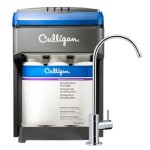Under Kitchen Sink Water Filter
An under kitchen sink water filter is a device that removes impurities from water by passing it through a filter. These filters are typically installed under the sink, and they can be used to improve the taste, smell, and appearance of water. They can also remove harmful contaminants, such as lead, chlorine, and bacteria.
There are many different types of under kitchen sink water filters available, each with its own unique benefits and drawbacks. Some of the most common types of filters include:
Activated carbon filters: These filters use activated carbon to remove impurities from water. Activated carbon is a highly porous material that has a large surface area, which allows it to absorb a wide variety of contaminants. Activated carbon filters are effective at removing a wide range of contaminants, including chlorine, lead, pesticides, and herbicides.
Reverse osmosis filters: These filters use a semi-permeable membrane to remove impurities from water. The semi-permeable membrane allows water molecules to pass through, while it blocks larger molecules, such as contaminants. Reverse osmosis filters are very effective at removing a wide range of contaminants, including lead, chlorine, bacteria, and viruses.
Ultraviolet (UV) filters: These filters use ultraviolet light to kill bacteria and viruses in water. UV filters are very effective at removing bacteria and viruses, but they are not effective at removing other types of contaminants.
When choosing an under kitchen sink water filter, it is important to consider the following factors:
The type of contaminants you want to remove: Some filters are more effective at removing certain types of contaminants than others. It is important to choose a filter that is effective at removing the contaminants that are present in your water.
The flow rate of the filter: The flow rate of a filter is the amount of water that it can filter per minute. It is important to choose a filter that has a flow rate that is sufficient for your needs.
The cost of the filter: Under kitchen sink water filters can range in price from a few dollars to hundreds of dollars. It is important to choose a filter that is affordable for you.
Once you have considered these factors, you can choose an under kitchen sink water filter that is right for you. Installing an under kitchen sink water filter is a relatively simple process that can be completed in a few hours. Once the filter is installed, you can start enjoying the benefits of clean, filtered water.
Here are some of the benefits of using an under kitchen sink water filter:
Improved taste and smell: Filtered water tastes and smells better than unfiltered water. This is because the filter removes impurities that can cause water to taste or smell bad.
Reduced health risks: Filtered water can help to reduce your risk of developing waterborne illnesses, such as gastrointestinal infections and diarrhea. This is because the filter removes harmful contaminants, such as bacteria and viruses.
Increased convenience: Having an under kitchen sink water filter is convenient because you can always have access to clean, filtered water. You don't have to worry about buying bottled water or boiling water before drinking it.
If you are looking for a way to improve the quality of your water, an under kitchen sink water filter is a good option. Under kitchen sink water filters are affordable, easy to install, and they can provide you with many benefits, including improved taste and smell, reduced health risks, and increased convenience.

Under Sink Water Filters Are They A Good Investment Paragon Systems

Twin Under Sink Water Filter System Pure Systems

Claryum Direct Connect

Whole House Vs Under Sink Filters

Puretec Ts200 Dual Undersink Water Filter With Faucet

A Guide To Under Sink Water Filtration Systems Culligan

3 8 Quick Change 1 Stage Under Sink Water Filter System Nu Aqua

Undersink Water Filters Think New Zealand

Under Sink Water Filter System For At 16000 In Navi Mumbai Id 2853713816030

Puretec Ro270 Reverse Osmosis Water Filter System







